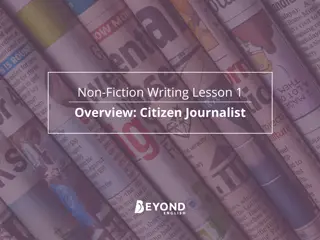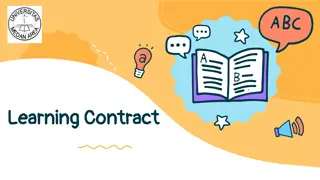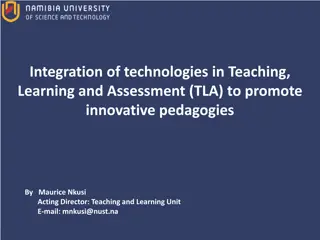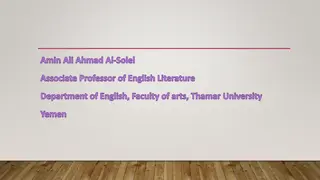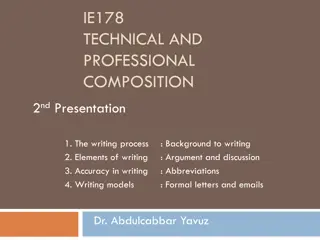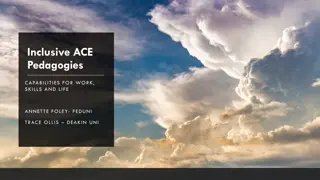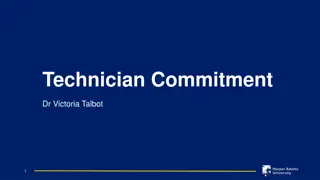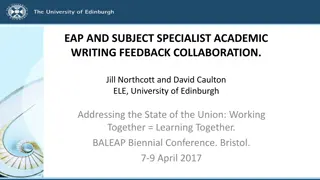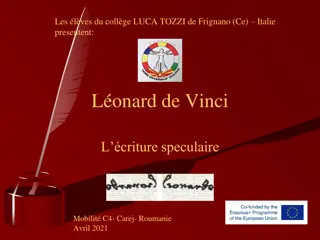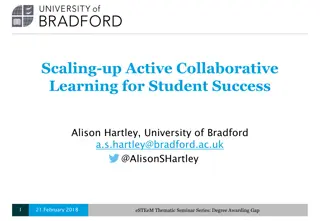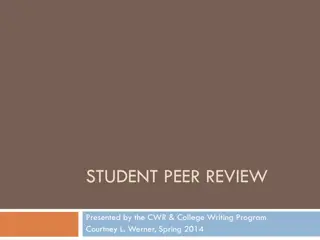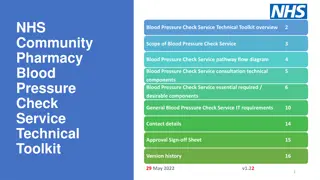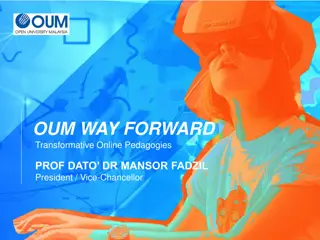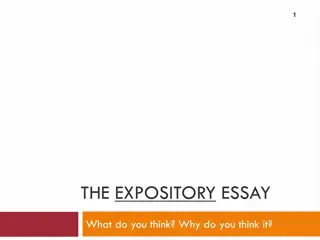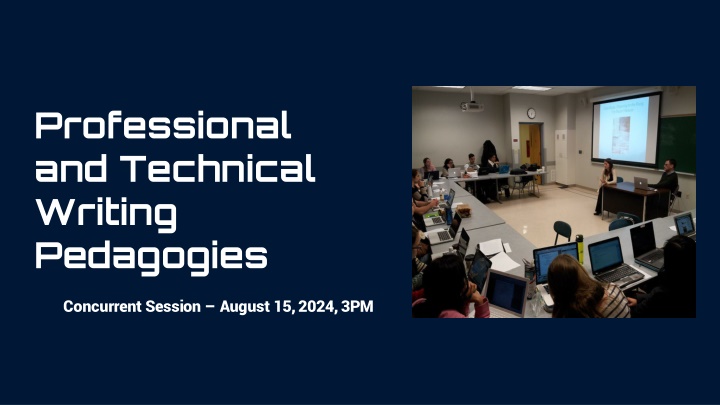
Enhancing Professional and Technical Writing Pedagogy Through Innovative Approaches
Explore innovative approaches to enhance professional and technical writing pedagogy, including flexible and scaffolded learning, teaching layered literacies, critical reflection, and design thinking. Learn how to incorporate critical reflection, design thinking, and layered literacies to improve technical communication skills in students.
Download Presentation

Please find below an Image/Link to download the presentation.
The content on the website is provided AS IS for your information and personal use only. It may not be sold, licensed, or shared on other websites without obtaining consent from the author. If you encounter any issues during the download, it is possible that the publisher has removed the file from their server.
You are allowed to download the files provided on this website for personal or commercial use, subject to the condition that they are used lawfully. All files are the property of their respective owners.
The content on the website is provided AS IS for your information and personal use only. It may not be sold, licensed, or shared on other websites without obtaining consent from the author.
E N D
Presentation Transcript
Professional and Technical Writing Pedagogies Concurrent Session August 15, 2024, 3PM
Flexible, Scaffolded Learning Professional and technical writing scholars have researched pedagogy in the field for at least four decades. One of the most often-spoken words in their work is flexible. In 2021, longtime PTW scholars Johndan Johnson-Eilola and Stuart Selber reflected on what they learned about flexible PTW pedagogy during the pandemic. They recommended the following framework for course design: 1. Begin with outcomes. What are the course outcomes? What are the assignment or activity outcomes? 2. Consider course interactions. Where can the students do this work? Will they interact with the Blackboard LMS? With you, the instructor? With other students? 3. Think about relationships. How will you establish good quality relationships between students? How can you design methods that allow everyone to participate ethically? 4. Now, choose assignments. Now that you know the outcomes, interactions, and relationships involved, what assignments and activities meet your needs?
Teaching PTW as layered literacies Basic Rhetorical Social Technological Ethical Critical adapted from Kelli Cargile Cook s Layered Literacies, 2002.
Critical Reflection Technical communication is about building applied and theoretical skills. Craig Hansen, writing in the collection Innovative Approaches to Teaching Technical Communication, wrote of the value of critical reflection in this process. Hansen is particularly interested in using critical reflection to help students tease out and understand the relatedness of multiple literacies, so this approach works very well with assignments that engage multiple literacies (239). Key to this approach, Hansen argues, are the following points: Creating opportunities for written reflection helps reinforce learning Creating targeted prompts helps students model for students what types of questions help them to engage the metacognitive skills associated with successful technical communicators Large group reflections are important too; they can be particularly useful during group projects, but a combination of both individual and group reflections extends this lesson for students.
Design Thinking and Making Jason Tham suggests that we engage design thinking through maker-based learning (391). Design thinking lends itself well to PTW pedagogies because it is a solution-driven, human- centered, problem-solving methodology (Tham 392). To teach in this way, we engage not only in creating genres and products but also in problem- solving processes. Defining the problem is key to success in courses that use design thinking how can you help your students focus on a specific problem? Tham suggests the following process: 1. Empathize with the users or audiences. 2. Define the problem clearly, with research. 3. Ideate about how to solve the problem. 4. Prototype a solution. 5. Test that solution.
Using Technology Writing with her graduate students, Jennifer Sano-Franchini explored Slack as a tool for technical communication pedagogy. They were specifically interested in exploring critical community building using technology platforms (Sano-Franchini, et. al., 136). Key to their use of technology in the classroom was building pedagogical community while also creating accessibility for all course members. The foundation rested in instructors and students identifying their shared goals. They developed the following framework for deciding whether or how to use a technological platform in the classroom. 1. Workflow. How does work happen in the platform? What does successful work look like for students? How long does it take is it a live chat? Asynchronous postings? 2. Accountability. How do members of the community remain accountable to each other? 3. Representation. What are the options for representation are there, for example, emoticons in multiple skin tones? Are there gifs that reflect all kinds of cultural experiences? 4. Multiple modes of expression. Can class members speak, type, post a reaction gif or emoji? Design for multiple modes so that everyone can respond in the mode of their choosing.
For More Information Tech Writing Pedagogy Bibliography: https://tinyurl.com/yh5d3sdm Technical Composition 2 (ENGL 10303) Course Info: https://tinyurl.com/mpmduve5 Professional & Technical Writing (ENGL 30503) Course Info: https://tinyurl.com/3vsj765f

